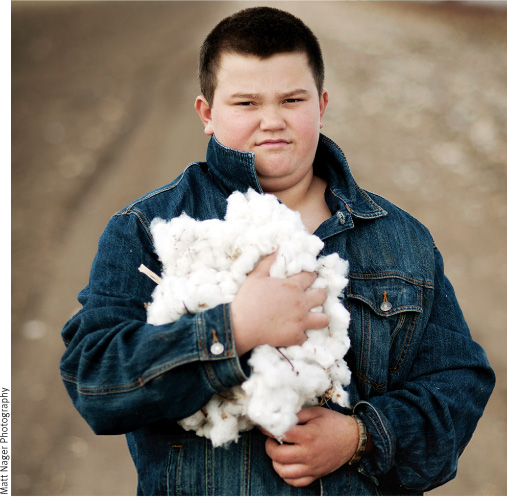Supply and Demand
3
What a competitive market is and how it is described by the supply and demand model
What the demand curve and the supply curve are
The factors that determine the demand for, and supply of, a good
The difference between movements along a curve and shifts of a curve
How the supply and demand curves together determine a market’s equilibrium price and equilibrium quantity
In the case of a shortage or surplus, how price moves the market back to equilibrium
BLUE JEAN BLUES


IF YOU BOUGHT A PAIR OF BLUE jeans in 2011, you may have been shocked at the price. Or maybe not: fashions change, and maybe you thought you were paying the price for being fashionable. But you weren’t—
And why were cotton prices so high?
On one side, demand for clothing of all kinds was surging. In 2008–2009, as the world struggled with the effects of a financial crisis, nervous consumers cut back on clothing purchases. But by 2010, with the worst apparently over, buyers were back in force. On the supply side, severe weather events hit world cotton production. Most notably, Pakistan, the world’s fourth-
Fearing that consumers had limited tolerance for large increases in the price of cotton clothing, apparel makers began scrambling to find ways to reduce costs without offending consumers’ fashion sense. They adopted changes like smaller buttons, cheaper linings, and—
At the same time, it was not all bad news for everyone connected with the cotton trade. In North America, cotton producers had not been hit by bad weather and were relishing the higher prices. Farmers responded to sky-
Wait a minute: how, exactly, does flooding in Pakistan translate into higher jeans prices and more polyester in your T-
In this chapter, we lay out the pieces that make up the supply and demand model, put them together, and show how this simple model can be used to understand how many—